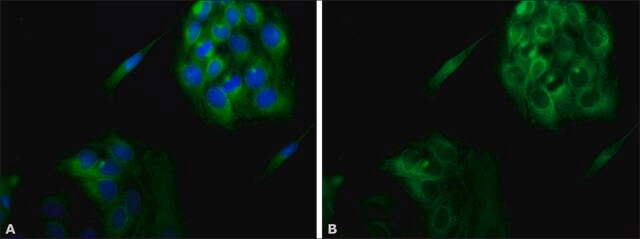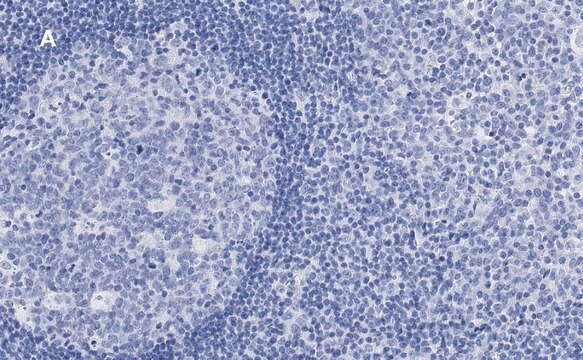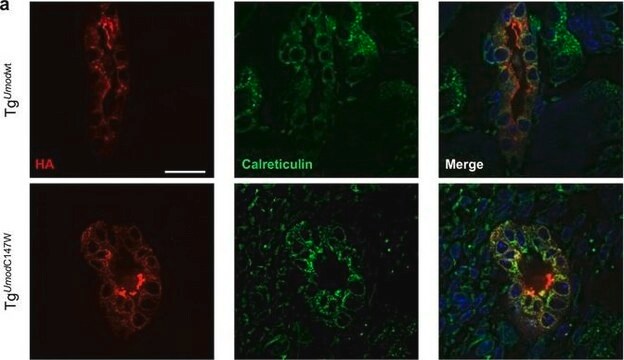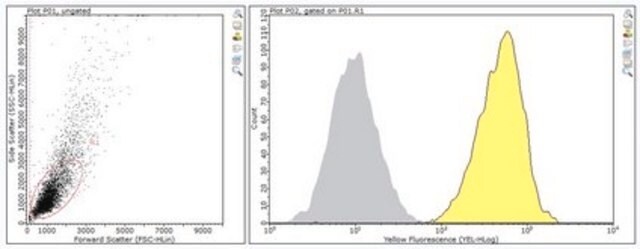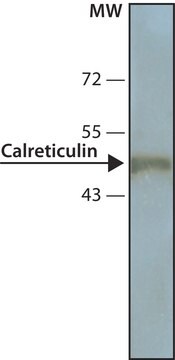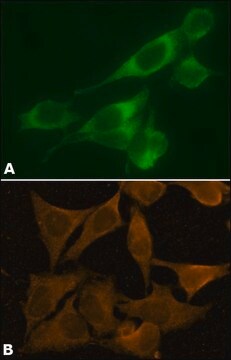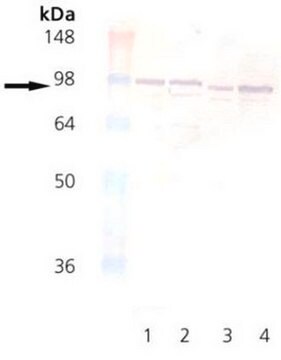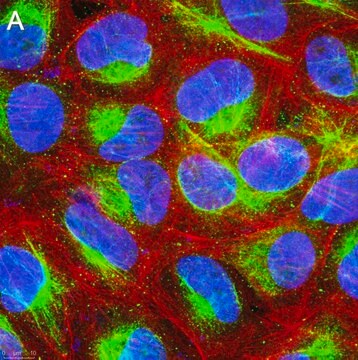AB2301
Anti-Calnexin Antibody
from rabbit, purified by affinity chromatography
Sinónimos:
Calnexin, IP90, Major histocompatibility complex class I antigen-binding protein p88, p90
About This Item
Productos recomendados
origen biológico
rabbit
Nivel de calidad
forma del anticuerpo
affinity isolated antibody
tipo de anticuerpo
primary antibodies
clon
polyclonal
purificado por
affinity chromatography
reactividad de especies
mouse, rat, human, horse, pig
reactividad de especies (predicha por homología)
equine (based on 100% sequence homology), rhesus macaque (based on 100% sequence homology), chimpanzee (based on 100% sequence homology), bovine (based on 100% sequence homology), porcine (based on 100% sequence homology)
envase
antibody small pack of 25 μL
técnicas
immunocytochemistry: suitable
immunohistochemistry: suitable (paraffin)
western blot: suitable
Nº de acceso NCBI
Nº de acceso UniProt
Condiciones de envío
wet ice
modificación del objetivo postraduccional
unmodified
Información sobre el gen
human ... CANX(821)
Descripción general
Especificidad
Inmunógeno
Aplicación
Immunohistochemistry Analysis: A 1:1,000-2,000 dilution from a representative lot detected Calnexin in human brain and human prostate tissues.
Neuroscience
Developmental Neuroscience
Calidad
Western Blot Analysis: A 1:10,000 dilution of this antibody detected Calnexin on 10 µg of human brain tissue lysate.
Descripción de destino
Forma física
Almacenamiento y estabilidad
Nota de análisis
Human brain tissue lysate
Otras notas
Cláusula de descargo de responsabilidad
¿No encuentra el producto adecuado?
Pruebe nuestro Herramienta de selección de productos.
Opcional
Código de clase de almacenamiento
12 - Non Combustible Liquids
Clase de riesgo para el agua (WGK)
WGK 1
Punto de inflamabilidad (°F)
Not applicable
Punto de inflamabilidad (°C)
Not applicable
Certificados de análisis (COA)
Busque Certificados de análisis (COA) introduciendo el número de lote del producto. Los números de lote se encuentran en la etiqueta del producto después de las palabras «Lot» o «Batch»
¿Ya tiene este producto?
Encuentre la documentación para los productos que ha comprado recientemente en la Biblioteca de documentos.
Nuestro equipo de científicos tiene experiencia en todas las áreas de investigación: Ciencias de la vida, Ciencia de los materiales, Síntesis química, Cromatografía, Analítica y muchas otras.
Póngase en contacto con el Servicio técnico